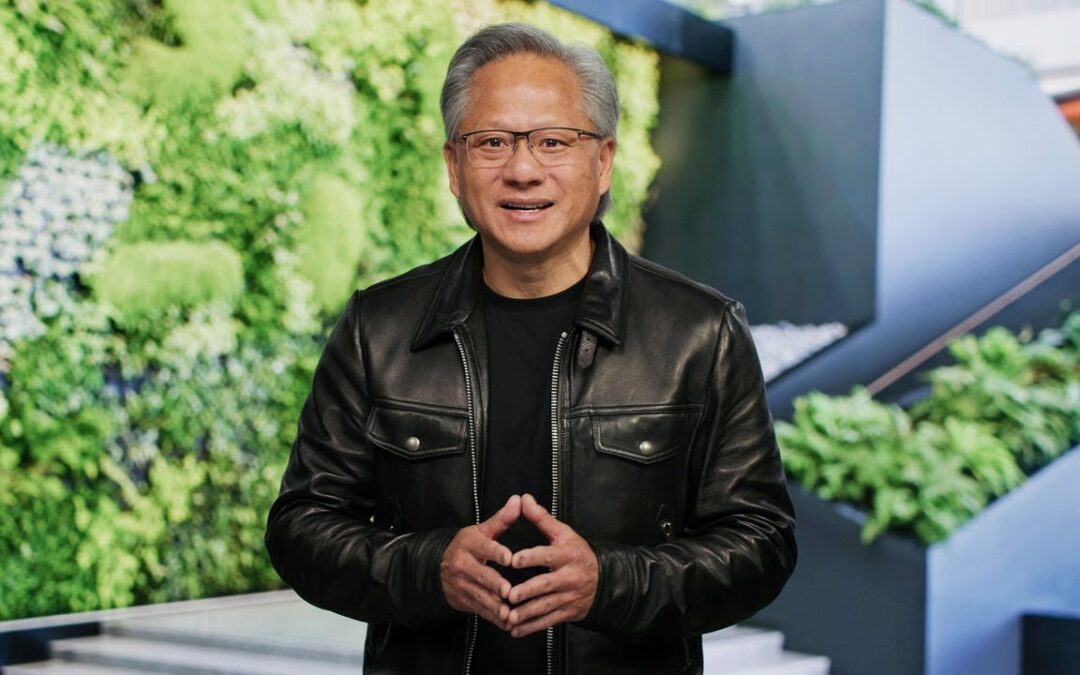Jensen Huang developed toughness and resiliency while attending a reform school as a youth. After graduating from Stanford University, he cofounded the chip maker Nvidia. Still its CEO, he has become one of the world’s richest people, largely thanks to his prescience in shifting his company’s focus to developing technology for AI.
Early Life
Jensen Huang was born Jen-hsun Huang on February 7, 1963. A native of Taiwan, he moved with his family to Thailand when he was a boy. Looking back at his schooling in the latter country, Huang describes himself as a “very good” but “very mischievous” student.
When social unrest roiled Thailand, Huang’s parents sent him and his brother to live with extended family in Washington state. His aunt and uncle, who had recently immigrated to the United States and spoke little English, sent Huang and his brother to what they believed was a prep school in Kentucky.
The school, Oneida Baptist Institute, was actually a reform school where fights and violence were common. In a 2012 interview with NPR, Huang described his classmates as “really tough.” Oneida’s curriculum involved each student having to work, and Huang was assigned the job of cleaning each of the toilets in his three-floor dorm.
Despite the difficult environment, Huang adjusted to his surroundings and eventually thrived at the school, telling NPR he “loved the time I was there.” His experience at Oneida also instilled in him a work ethic and toughness that he would later draw on as an entrepreneur.
College and Early Career
Huang and his brother later reunited with their family in Oregon. After finishing high school in Beaverton, during which time Huang appeared in Sports Illustrated as a junior table-tennis champion, he attended Oregon State University (OSU).
It was at OSU where Huang further developed his interest in computers. It was also where he met his future wife, whom he married after earning his degree in electrical engineering in 1984. According to Huang, 1984 was the “perfect year to graduate,” as it was the year Apple released its first Mac computers.
Huang went on to work in the tech industry, taking jobs at chip manufacturers LSI Logic and Advanced Micro Devices. He began attending Stanford University in 1990 and graduated from the school in 1992 with a master’s degree in electrical engineering.
Founding Nvidia
In 1993, Huang met up with Chris Malachowsky and Curtis Priem at a Denny’s in San Jose, California. Over breakfast, the three friends fantasized about the type of company they’d like to form. What began as a light-hearted conversation culminated in the founding of chip maker Nvidia.
Under Huang’s leadership as CEO, Nvidia focused initially on building graphics chips designed for video games. In creating vivid, immersive visuals, Huang was pursuing a “beautiful” childhood memory of watching flames dance on the surface of a pool.
Despite Huang’s passion, Nvidia struggled in the ’90s, almost going bankrupt at one point. According to fellow cofounder Malachowsky, it was Huang’s resiliency and toughness that enabled the company to survive.
Nvidia Takes Off
Nvidia’s struggles were put decidedly into the rearview mirror when, in 1999, the company invented the graphics processing unit (GPU). The technology revolutionized the PC gaming market, allowing users to experience highly realistic videos and images, including in 3D.
The technology similarly sparked exponential growth at Nvidia. From the late ‘90s into the early 2000s, the company grew 100 percent annually. In 2001, it reported $1.4 billion in sales and $177 million in profits. By 2002, it had surpassed competitors like ATI Technologies to become the largest producer of GPUs in the world.
In addition to its innovative technology, the company expanded thanks to its rigid adherence to deadlines. Recognizing that new computers were released each April and August, Nvidia focused on producing the most advanced GPUs based on this schedule. By 2002, the company was responsible for the graphics for Dell’s Inspiron line and the Microsoft Xbox gaming system.
Continued Success
A decade later, Nvidia’s GPUs were integral in creating graphics for films like Avatar. Meanwhile, its processors helped to power the majority of the world’s fastest supercomputers.
The late 2000s and early 2010s also saw Huang lead Nvidia into a legal battle with the world’s largest chip maker, Intel. Nvidia eventually prevailed, with Intel paying Huang’s company $1.5 billion to license its GPUs.
Pivot to AI
Nvidia had refocused its business on producing chips for mobile devices around the time of the Intel lawsuit. In 2012, after a breakthrough that saw Nvidia engineers design a chip that possessed visual-recognition skills akin to humans, Huang began pivoting the company toward AI, investing more than $30 billion into the emerging technology over the next decade.
The prescient shift gave Nvidia an enormous head start on many its competitors. When the AI boom came in 2023, Nvidia was better positioned than any other company to capitalize on it. As of August 2023, the company holds a dominant market position, with seven out of every 10 AI chips sold being a Nvidia product.
In the same month, Nvidia’s valuation reached $1.1 trillion—191 percent higher than the year prior. Huang similarly saw his personal wealth skyrocket. Per Bloomberg, his net worth has increased by at least $28 billion in the first eight months of 2023, putting his personal fortune at over $40 billion.

